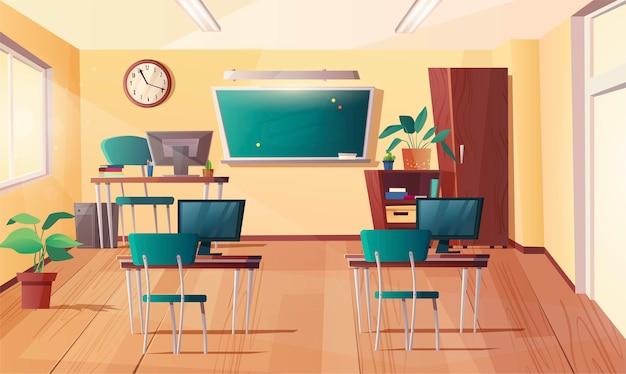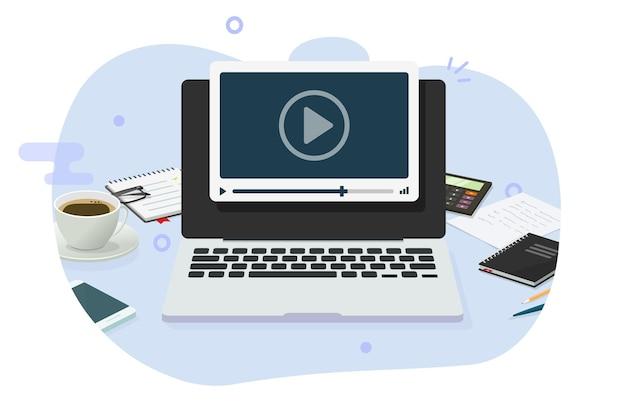Computers have become an indispensable part of our daily lives, revolutionizing the way we work, play, and communicate. In this digital era, having a basic understanding of computers is not only essential but also a necessity for students, especially for those in Class 6. So, let’s delve into the world of computers and explore what exactly they are and how they impact our lives.
In this blog post, we will provide a comprehensive overview of computers, catering specifically to Class 6 students. We will start by discussing the definition of a computer and why it is relevant in today’s world. Additionally, we will explore the various types of computers and their characteristics. Along the way, we will also shed light on the role of computers in our society and highlight both their advantages and disadvantages. Join us on this exciting journey to gain a better understanding of the incredible machine that is the computer!
So, grab your seat and get ready to dive into the fascinating world of computers. Whether you’re a tech enthusiast or simply looking to enhance your knowledge, this blog post will equip you with the fundamentals of computers in a fun and informative manner. Let’s get started!

What is a Computer? A Class 6 Definition
So, you’re sitting in your classroom, and your teacher starts talking about computers. You may be wondering, “What in the world is a computer?” Don’t worry, my curious little friend, I’m here to break it down for you.
Let’s Get Technical: What is a Computer, Exactly
A computer is like the superhero of machines. It can do all sorts of amazing things, like processing information faster than the speed of light (well, not really, but close enough!). It’s an electronic device that can take input, process it, and produce output. Think of it as a super-smart robot that follows instructions to perform tasks.
The Brain Behind the Magic: The Central Processing Unit (CPU)
Every computer has a brain, and it’s called the Central Processing Unit (CPU). Just like your brain helps you think and make decisions, the CPU is the brain of the computer. It handles all the calculations, performs complex operations, and makes sure everything runs smoothly.
Input and Output: Tell Me What You Want, What You Really, Really Want!
When you want to communicate with a computer, you need to use input and output devices. Input devices are like the computer’s ears and eyes, allowing you to give it instructions or provide information. These devices include keyboards, mice, and even touchscreens. On the other hand, output devices are like the computer’s mouth and hands, giving you the results or information you asked for. Examples of output devices include monitors, printers, and speakers.
Compiler: The Translator of the Computer World
Now, imagine you and your computer speaking different languages. How would you understand each other? Enter the compiler. This is a clever program that translates the instructions you give in a language you understand (like English) into a language the computer understands (called machine code). It’s like having a secret language decoder for you and your computer to communicate effectively.
Memory: Where Information Hangs Out
You know how your brain stores all the information you need to remember? Well, a computer has its own version of memory called Random Access Memory (RAM). RAM is like a temporary storage space that the computer uses to quickly access data while it’s working on something. Imagine it as your computer’s sticky notes—handy and readily available for immediate use.
Software and Hardware: Best Buddies
In the incredible computer world, there are two main players: software and hardware. Software is all the programs and instructions that tell the computer what to do. It’s like the chef’s recipes that guide the computer in creating delicious results. On the other hand, hardware is the physical equipment—the tangible parts you can touch and see, like the monitor, keyboard, and CPU. Software and hardware work together to bring the computer to life and make all the magic happen.
Wrapping Up the Computer Definition for Class 6
Now, my little tech enthusiast, you have a solid understanding of what a computer is. It’s an electronic machine with a super-smart brain called the CPU, input and output devices, a translator called the compiler, temporary memory called RAM, and a dynamic duo of software and hardware. Computers are the superheroes of technology, helping us accomplish incredible tasks and making our lives easier. So next time someone says “computer,” you can proudly say, “Ah, yes! I know what that is!”

Frequently Asked Questions (FAQ) About Computer Definition for Class 6
What is the role of computers in today’s world
Computers play a pivotal role in our daily lives, like that friend who always has your back. They have become the ultimate multitaskers, handling everything from communication and entertainment to business and education. Need to send an email? Computers got you covered. Bored? Computers can entertain you for hours on end. Want to conquer the world? Well, maybe not that, but computers can definitely help you gather information and achieve your goals. It’s safe to say that computers have become an essential tool in almost every aspect of modern life.
What are the ten characteristics of computers
Computers are like superheroes with their own unique set of superpowers. Let’s take a glance at the top ten characteristics that make computers so amazing:
- Speed: Computers can process data faster than a cheetah chasing its prey.
- Accuracy: Unlike humans, computers rarely make mistakes (unless we programmers mess up!).
- Storage: Computers can store vast amounts of information, like an elephant with a virtual memory.
- Automation: They can perform repetitive tasks tirelessly, like a robot that never gets tired.
- Versatility: From crunching numbers to editing photos, computers can handle a wide range of tasks.
- Reliability: They’re more dependable than your favorite pair of socks (which always seem to go missing!).
- Scalability: Computers can handle small and large tasks with equal ease, just like elastic pants can fit everyone.
- Connectivity: With computers, we can connect with people worldwide, turning the globe into a small village.
- Efficiency: Computers help us save time and effort, so we can spend it on more important things, like binge-watching our favorite shows.
- Entertainment: Let’s be honest, computers are a gateway to endless entertainment. Games, movies, music – you name it!
What are the disadvantages of using computers
While computers are fantastic, they do have a few downsides. Here are some common limitations of computers:
- Dependency: We’ve become so reliant on computers that a technological glitch can send our lives into chaos—like spilling coffee on your keyboard moments before a deadline. Yikes!
- Health Issues: Staring at a screen for extended periods can strain our eyes and lead to other physical discomforts. Remember to take breaks and blink often; your eyes will thank you!
- Distractions: With the whole internet at our fingertips, it’s easy to get lost in a sea of cat videos and memes, consequently hampering productivity.
- Lack of Emotional Connection: Computers may be efficient, but they can’t replace human interactions and emotional connections. Sometimes, a hug is better than an emoji!
- Privacy Concerns: With the increasing amount of personal data stored and shared via computers, there’s always the risk of unauthorized access or data breaches. Stay vigilant and protective of your digital privacy.
What is the definition of a computer for Class 6
Ah, Class 6! Such fond memories of innocence and simplicity. In simple terms, a computer for Class 6 refers to a machine that can follow instructions, perform calculations, store and retrieve data, and help you explore the vast realm of knowledge. It’s like having your personal genie, but instead of granting wishes, it aids you in your digital journey.
How many types of computers are there
Just like ice cream flavors, there are multiple types of computers to cater to different needs and tastes. Here are a few popular categories:
- Personal Computers (PC): These include desktops and laptops, commonly found in homes and offices.
- Tablets and Smartphones: Sleek and portable, these compact computers let you carry the digital world in your pocket.
- Servers: These workhorses handle network resources, serving information to other computers.
- Mainframes: Large and powerful, mainframe computers keep businesses running smoothly and handle massive amounts of data.
- Supercomputers: These behemoths are like the giants of the computer world, used for complex scientific calculations and simulations.
- Embedded Computers: Found in everyday objects like cars, appliances, and even toys, these computers quietly do their work behind the scenes.
Remember, the world of computers is vast and ever-evolving. So buckle up and embrace the digital ride!
That concludes our FAQ section on computer definition for Class 6. If you have more burning questions, feel free to ask!
